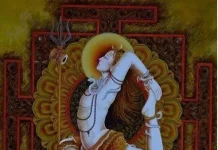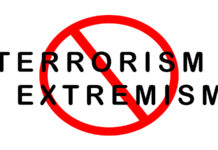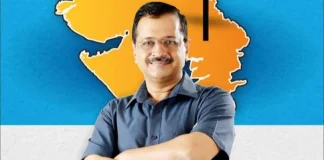Prana the vital force pervades all the three worlds—below the earth, the earth and above the earth. All the activities are directed by prana. To that very prana we request to protect us as a mother protects her children. We also request the prana to stimulate our intellect.
By Pragati Oswal
Before you go through the rest of this article, take a few moments to practice the following set of instructions for about 5-10 minutes.
- Lie flat on your back with feet slightly apart and palms upturned. Else sit comfortably, preferably with a straight back. Close your eyes (after you finish reading the rest of the instructions and before you start to practice them)
- Observe how you are breathing. Don’t manipulate your breath, just watch how you breathe. Do you pull in your abdomen while breathing in? Does your clothing restrict your abdomen from inflating while you breathe in? Are you breathing mostly into your chest? If any of these are true for you then consciously embrace the next step.
- Shift your awareness to your abdomen and consciously inflate it like a balloon when you breathe in. As you breathe out let the abdomen collapse. Repeat this for the next 5 breaths. After that just breathe.
- Your breaths would have probably become deeper than before without you having to put any extra effort to breathe deep.
Does your body feel more relaxed? Have you yawned or do you feel the urge to yawn? Do you feel refreshed? Do you feel the need to continue with this practice for a little longer?
If the answer to any of these questions is yes, then you have experienced the first few side-effects rather side-benefits, of your body’s life inducing principle, prana.
Our traditional knowledge systems acknowledged “prana”as the life-force, that which animates the matter and creates “alive-ness”. (prasnopanisad verse 13)
prāṇasyedaṁ vaśe sarvaṁ tridive yat pratiṣṭhitam |
māteva putrān rakṣasva śrīśca prajñāṁ ca vidhehi na iti ||
(Prana the vital force pervades all the three worlds (below the earth, the earth and above the earth) All the activities are directed by prana. To that very prana we request to protect us as a mother protects her children. We also request the prana to stimulate our intellect.
Prana is the subtlest form of biological energy. It is present in every physical and mental event. Prana is intelligence and consciousness, the two vital ingredients which animate physical body, without which nothing can remain alive. Prana isn’t bound by the laws of physics that apply to other forms of energy such as sound, light, electricity etc. Prana is described as that which can increase or decrease by itself without any ostensible agency (Svayameva tanavam yati, svayamexa pinatam yati).
Prana enters the body through the breath and then divides itself into 5 facets that govern various physiological functions. Prana-functions in the upper region especially respiration, Apana-functions of lower regions like excretion and procreation, Samana-functions of the abdomen like digestion, Udana- functions like vomiting, cognitive skills, memory and Vyana-regulates the circulation, touch sensation, coordinates the other pranas and acts as a reserve for other pranas. Whenever there is an imbalance in any of the systems, the governing prana needs to be tapped.
Since body’s main source of Prana is through breath which on a gross level brings in oxygen and on a subtle level brings life energy. The easiest way to balance prana is by controlling how we breathe.
The state of mind also influences prana and the state of mind is conveyed to the state of body by the way of breath. Breath acts as a bridge between the involuntary and voluntary activities in the body. One the one hand we can regulate our breath, on the other, the breathing goes on even without our awareness.For example, when we are stressed, we automatically to breathe faster or sometimes the stress “knocks the breath out” literally.The paced-up breath sends messages to kick start the sympathetic response that increases heart rate, blood pressure, adrenaline in the blood etc. Physically, this is out of sync, as the body is in the state of rest while (the response and hence) the chemicals being secreted in the body match the requirement of a strenuous work-out session. When the output doesn’t match the input, there’s an imbalance. That is to say, if the body remains at rest while the internal response is that which requires the body to work out physically, then the body starts to over work other areas within, burning out the body internally.
In such a situation if we start to regulate our breath, the body finds a way to snooze if not shut-off, the “stress-messenger”.
So, by consciously regulating one’s breath, one can influence one’s blood pressure, heart rate and the rate at which adrenaline is being pumped into the blood-stream. Once the breathing slows down, the body systems automatically switch to the “relax” mode.
As for stress, the situation may or may not be in one’s control, but one’s breath is! Consequently, many symptoms of stress can also be managed by managing the breath.
Breath-Management or more appropriately, Breath-Regulation is termed as Pranayama in the science of Yoga. By regular practice of pranayama one can regulate as well as reduce one’s breathing rate in general. At rest, an adult breathes on an average, 12 – 18 times per minute. Tortoise, considered as the longest living land animals, breathes about 3-4 timesin a minute. The yogis observed this, and developed breath conservation methods to increases life-span.
With regular practice of Pranayama one can reduce the number of breaths to 7-11 per minute.
Physically one can compare this to the endurance that marathon runners/athletes/sports professionals develop with regular physical training that, over a period of time leads to a decreased heart and a pulse rate at rest compared to a normal person. As a result, they can handle as well as adapt to physical stress with ease.
Similarly, a reduced breath rate makes the body less vulnerable to the prolonged or the sustained stress-response and more efficient at recovering itself. A pranayama practitioner develops a lower breathing rate in general that helps in restoration of bodily equilibrium or homeostasis.
So, when you need a breather in life, you have a simple yet effective solution. Just breathe!












